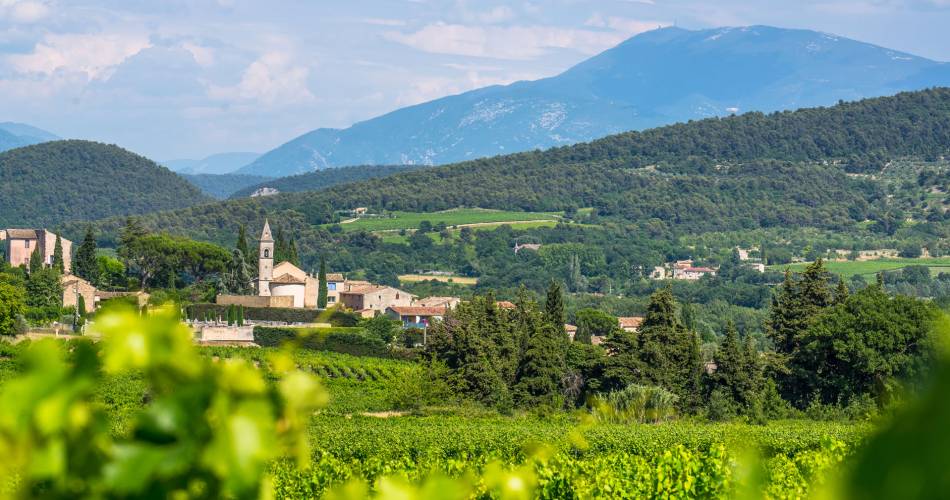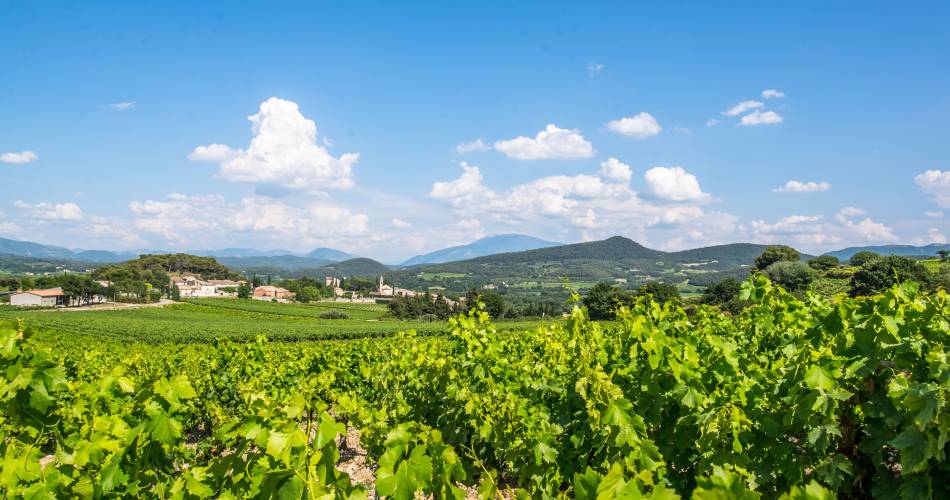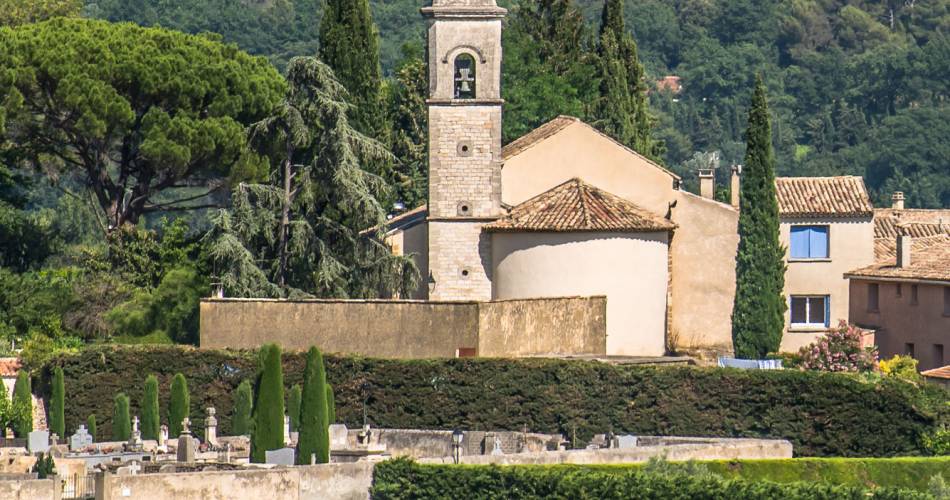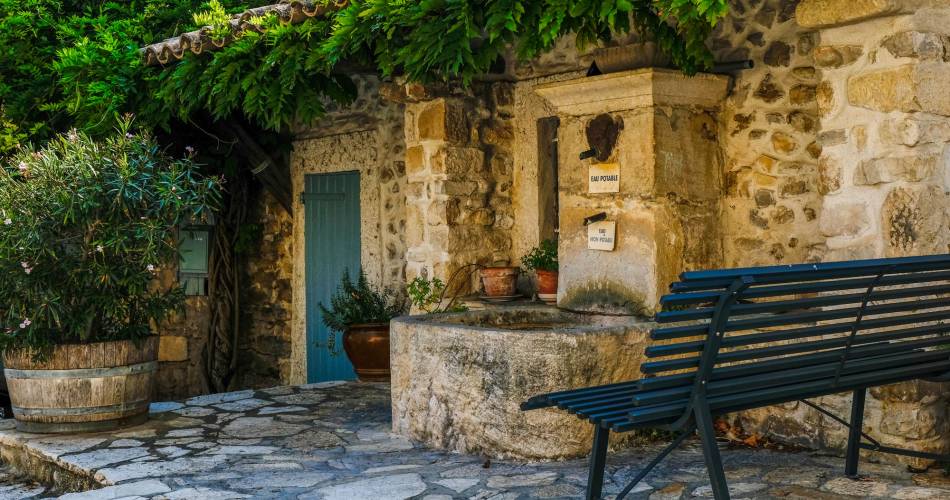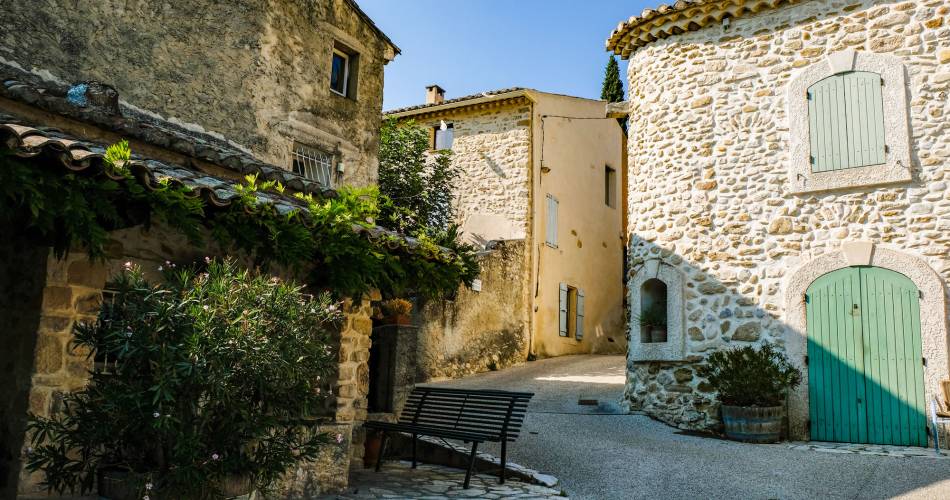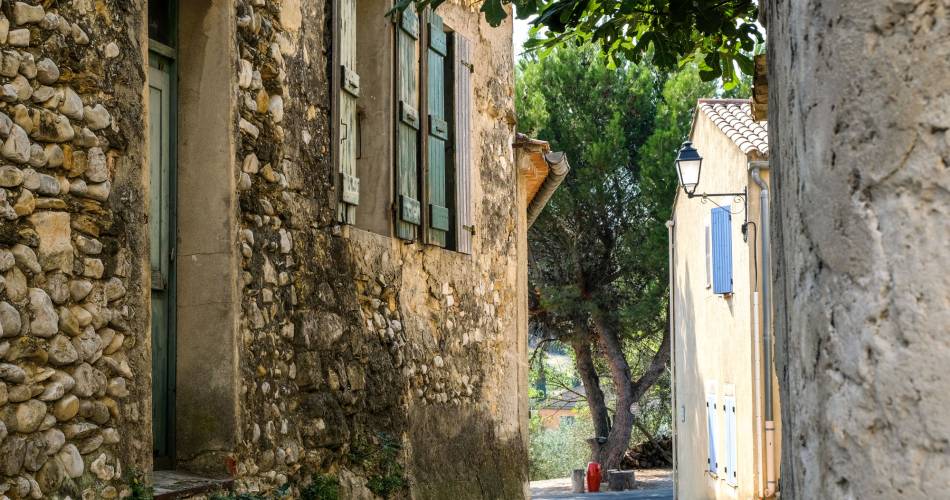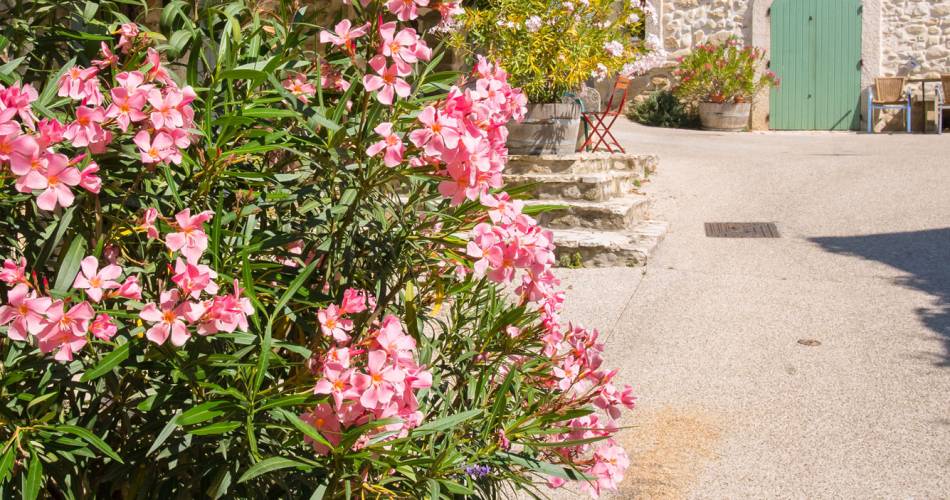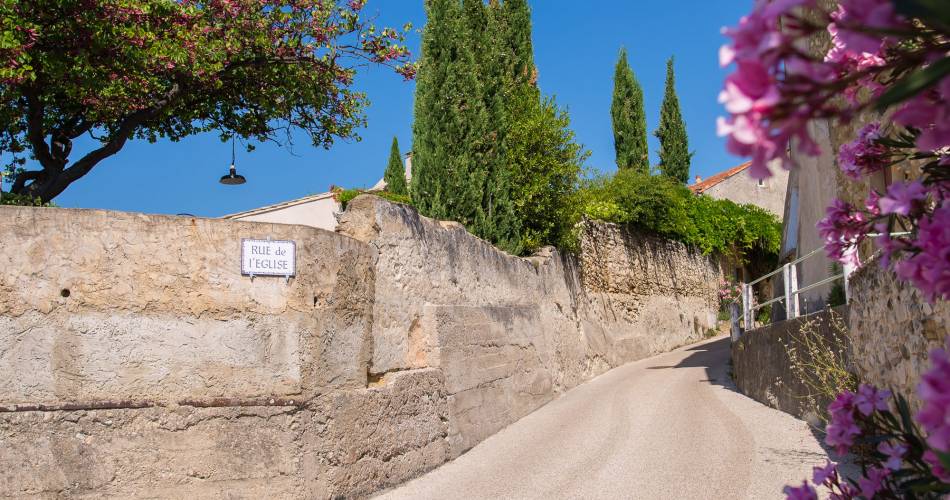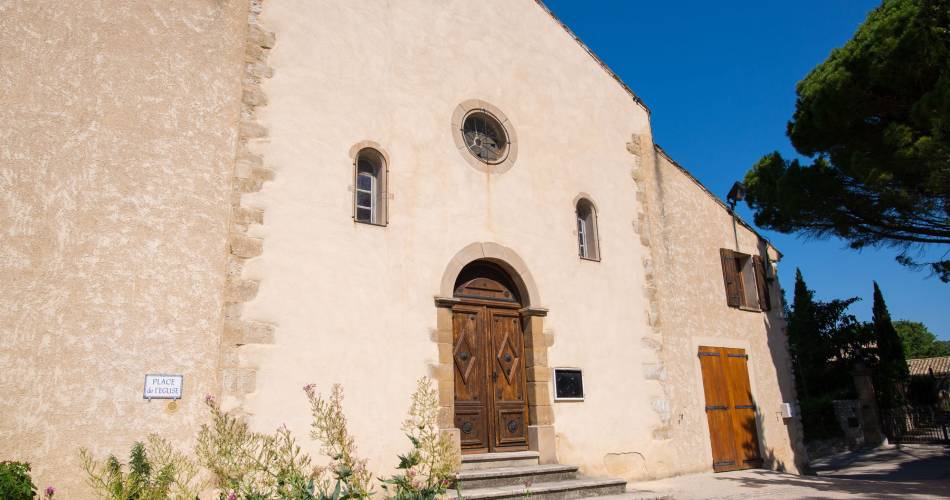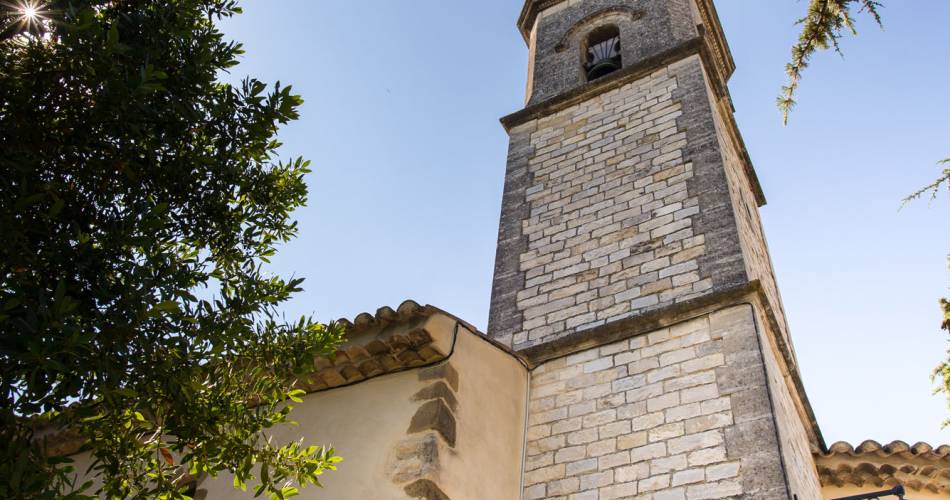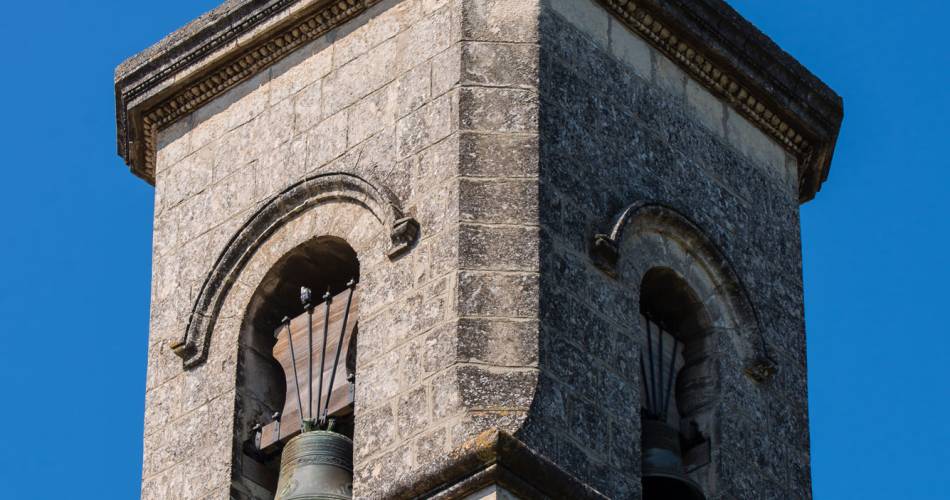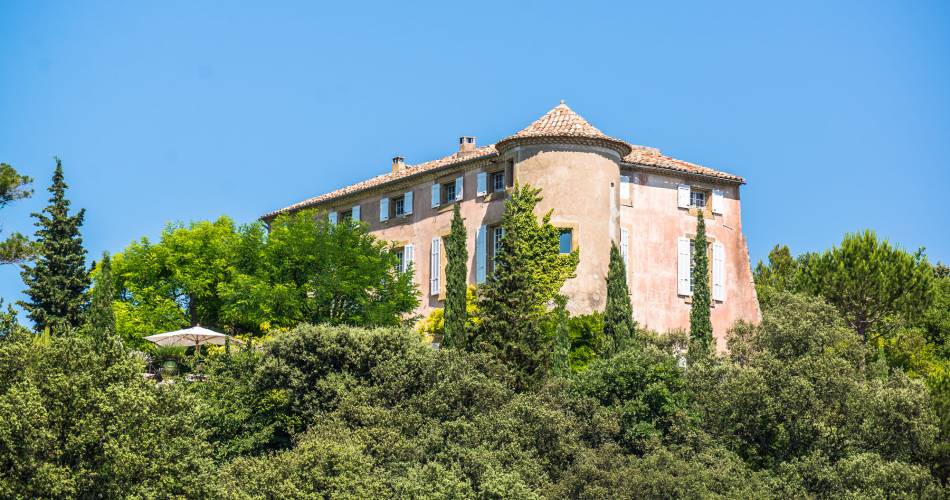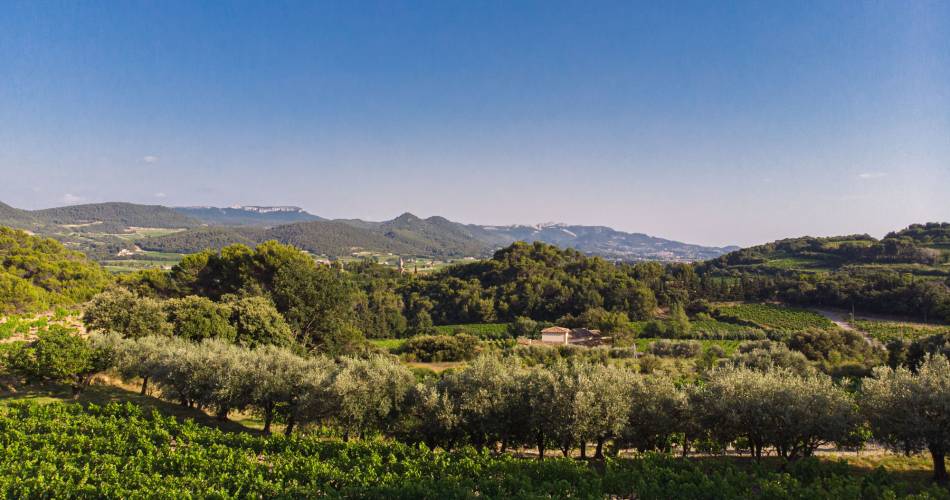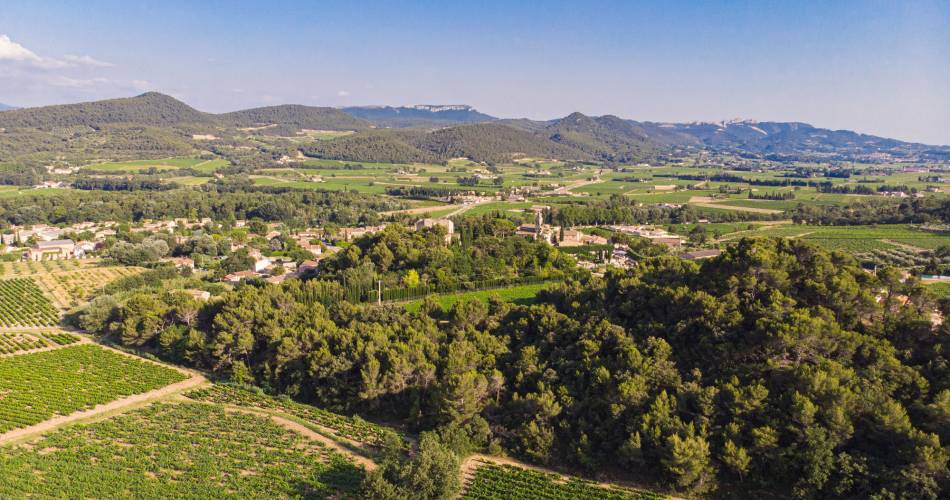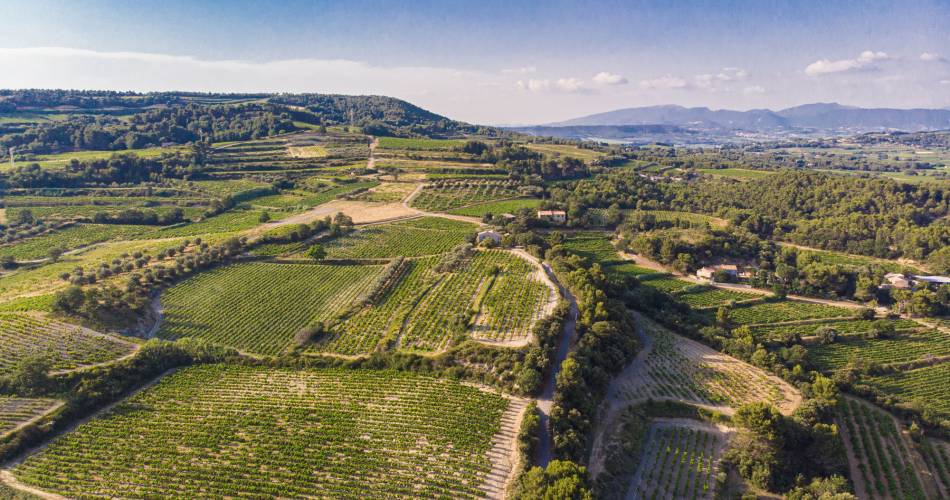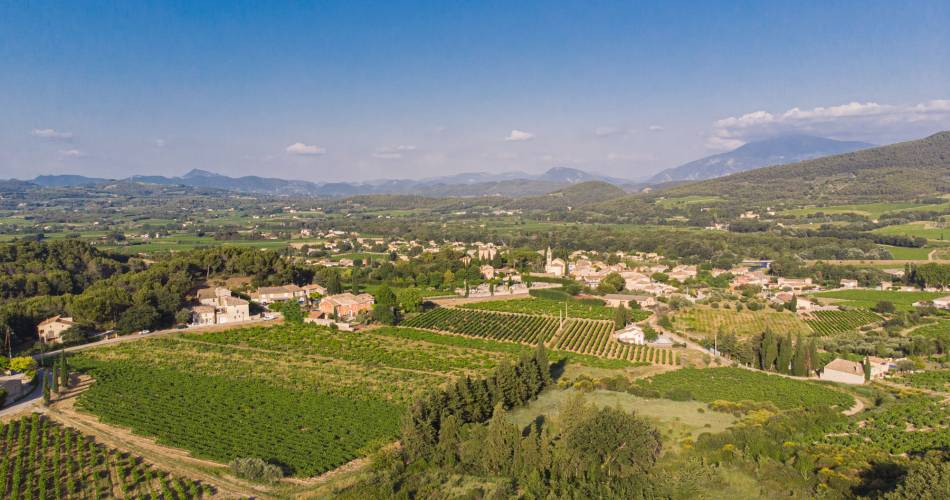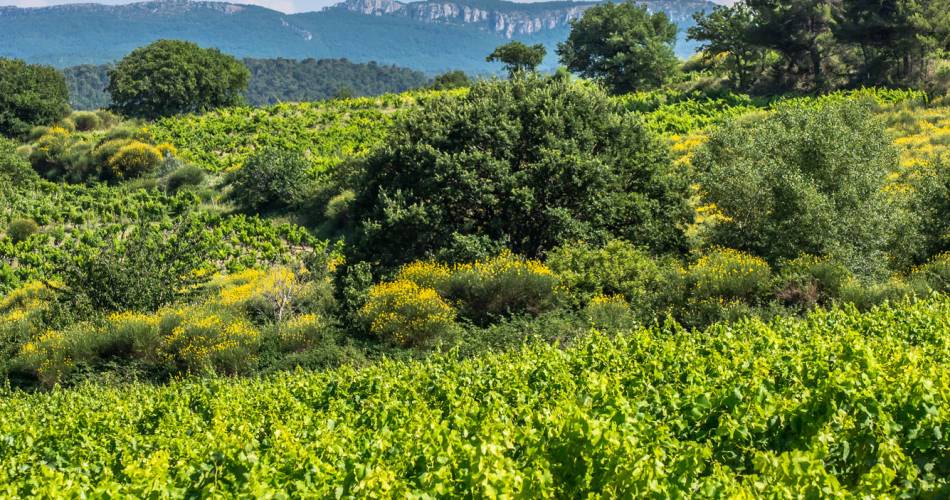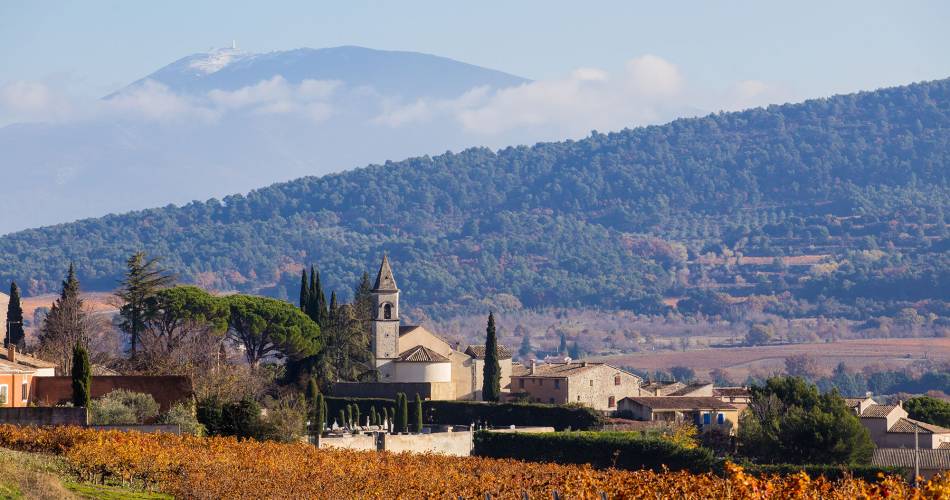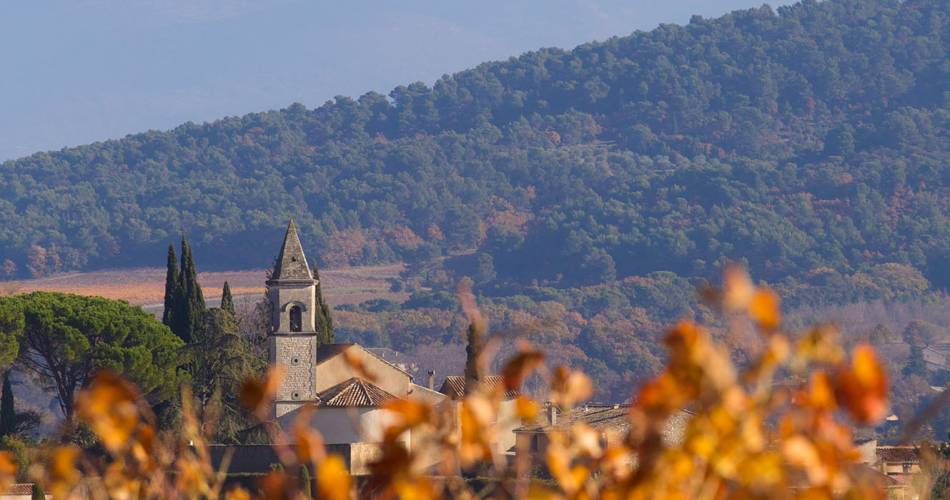Roaix
Village de Roaix
Tourist service in Roaix :
The wine-making village of Roaix, clinging to a hillside, is recognized for the quality of its wine, today produced under Côtes du Rhône Villages appellation.
In the 12th century, a Templar headquarters was created. A full-fledged Commandery, it had its own chapel as well as its regular home. At a place called the « les Crottes », you can still see the apse of the Notre-Dame-des-Crottes, a private building today. Nearby, was the old Templar house with vaulted caves dug into the “safre*”.
The historical part of Roaix is located on the heights. So don’t hesitate to head to the old village and explore its narrow streets. There, you will discover beautiful houses, remnants of the original village walls, and a lovely fountain.
You will also discover the Saint-Roch church, built on the site of an older church, and completed in 1736. This church, built directly over “safre*”, has the distinction of having an apse facing west and not east, as is usually the case.
The church is close to the castle. A typically Provençal building which dates back to the establishment of the Templars on the hill of Roaix. A simple fortress in the beginning, the castle took on its current appearance in the 15th century. A private property, it is surrounded by a remarkable park.
Several paths will also enable you to access the hills above the village. Covered with vineyards, olive trees and woods, they will offer you an exceptional view of the Ouvèze valley and the surrounding mountains.
*safre : Zaffre is the provençal word used by masons to describe a native
material of stone and sand.
DID YOU KNOW?
A tomb excavation in 1966 uncovered a pile of skeletons from the Copper Age. A massacre was the likely cause of this mass burial since arrows were found, stuck into the bones.
VILLAGE SECRET
No one can explain the origin of the village’s name. Perhaps ER ROHA, the Arabic name for Edessa, Turkey, which was conquered in the First Crusade, in which a certain Pierre de Roaix took part... This explanation remains theoretical as there are also other theories about the etymology of Roaix.
Distance from Vaison : 6km
Inhabitants : 661 referred to as les Roaixois
Elevation : 149m mini and 384m maxi
The historical part of Roaix is located on the heights. So don’t hesitate to head to the old village and explore its narrow streets. There, you will discover beautiful houses, remnants of the original village walls, and a lovely fountain.
You will also discover the Saint-Roch church, built on the site of an older church, and completed in 1736. This church, built directly over “safre*”, has the distinction of having an apse facing west and not east, as is usually the case.
The church is close to the castle. A typically Provençal building which dates back to the establishment of the Templars on the hill of Roaix. A simple fortress in the beginning, the castle took on its current appearance in the 15th century. A private property, it is surrounded by a remarkable park.
Several paths will also enable you to access the hills above the village. Covered with vineyards, olive trees and woods, they will offer you an exceptional view of the Ouvèze valley and the surrounding mountains.
*safre : Zaffre is the provençal word used by masons to describe a native
material of stone and sand.
DID YOU KNOW?
A tomb excavation in 1966 uncovered a pile of skeletons from the Copper Age. A massacre was the likely cause of this mass burial since arrows were found, stuck into the bones.
VILLAGE SECRET
No one can explain the origin of the village’s name. Perhaps ER ROHA, the Arabic name for Edessa, Turkey, which was conquered in the First Crusade, in which a certain Pierre de Roaix took part... This explanation remains theoretical as there are also other theories about the etymology of Roaix.
Distance from Vaison : 6km
Inhabitants : 661 referred to as les Roaixois
Elevation : 149m mini and 384m maxi
Contact
Village de Roaix84110 Roaix
Tel :
View number
04 90 46 11 46
E-Mail : Afficher le mail contact@mairie-roaix.fr
E-Mail : Afficher le mail contact@mairie-roaix.fr
Coordinates
Longitude : 5.01369Latitude : 44.242406
> Getting there by public transport
Nearby
This page was produced with the help of theOffice de tourisme du Pays de Vaison Ventoux en Provence
